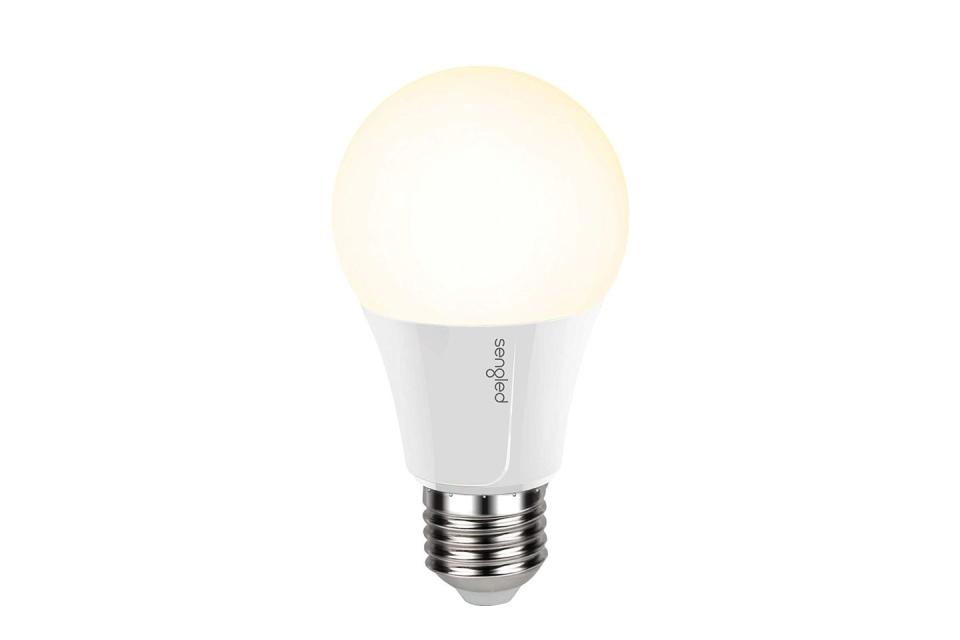A Smart Buyer’s Guide to Light Bulbs

If Thomas Edison were to walk down the light-bulb aisle of a modern home-improvement store, he’d be shocked to see what’s become of his brainchild. Long gone are the days of simply choosing a light bulb based on its wattage.
Today, light bulbs are available in a dizzying array of types, sizes, and shapes. Pity the poor shopper who enters the light-bulb aisle ignorant of the evolutionary changes to Ole’ Tom’s electric arc lamp, as it was originally called. Here are the five light bulbs you’re likely to encounter, and how to pick the best bulb for you:
Incandescents

Contrary to what you may have heard, the incandescent bulb isn’t dead; it’s on life support, but still available online and in some stores. In 2007, Congress passed a law stating that incandescent bulbs could no longer be made in the U.S. because they didn’t meet new federal energy-efficiency standards. Over the past 12 years, there has been a gradual phase-out of incandescent bulbs, but as mentioned, you can still buy them, though they’re becoming scarcer.
Incandescent bulbs are very affordable, dimmable, commonly available in sizes ranging from 40 to 150 watts, and they emit a warm, soft light that’s complementary to skin tones. On the downside, traditional incandescent bulbs produce a lot of heat, only last 1 to 2 years, and consume more electricity than any other type of bulb.
Recommended: GE Lighting 40-Watt A19
Compact Fluorescent (CFL)

Unlike traditional tubular fluorescent bulbs, which buzz, flicker, and produce a harsh bluish light, compact fluorescents come on quickly and produce a pleasing, color-corrected glow. Plus, modern CFLs are 75 percent more energy-efficient than incandescent bulbs, and they have a life expectancy of 7 to 9 years. They’re commonly available in sizes ranging from 3 to 120 watts. (A 14-watt CFL is equivalent to a 60-watt incandescent.)
Keep mind, however, that not all CFLs are dimmable, some are slow to reach full brightness in extreme cold, and they contain trace amounts of mercury. So be careful when handling shattered bulbs.
Recommended: Ushio Compact Fluorescent
Halogen

Halogen lights are similar to incandescents, in that they that contain a filament that’s heated to the point of glowing. However, halogens consume between 25 and 80 percent less electricity than incandescents, depending on the specific bulb. Halogens emit a pure white light that’s very close to natural daylight, so colors appear sharper, crisper, and more vibrant.
Halogens are fully dimmable, available from 5 to 500 watts, and they typically last between 2 and 3 years. However, they get extremely hot, so allow the bulb to cool down before touching it. (That’s why halogens aren’t ideal for table lamps, floor lamps, and other fixtures where the bulb is within easy reach.)
Also, never use your bare hands to change a halogen bulb. Natural oil on your skin will transfer to the bulb, causing the bulb to warm too quickly and possibly shatter.
Recommended: Philips Landscape and Indoor 50-Watt
Light-Emitting Diode (LED)

There’s a lot to like about LEDs: They are affordable, super energy-efficient, stay cool to the touch, and can last an astonishing 10 to 20 years. LEDs are 75 percent more energy-efficient than standard incandescent bulbs, and come in sizes ranging from 2.5 to 16 watts. And be aware that some, but not all, LEDs are dimmable.
LEDs produce directional light, not diffused light, so they’re not great for ambient room lighting. They’re much better suited for task-lighting situations, such as under-cabinet kitchen lighting. There are some newer versions that cluster together several LEDs in one bulb to produce a broader light display, but they cost up to six times more than directional-light LEDs. And specialty LED bulbs are now available to replace incandescent bulbs in recessed light fixtures.
Recommended: Great Eagle LED 23W
Wi-Fi Capable

Get your geek on with these specialty bulbs that allow you to remotely control the lighting in your home via a smart phone or tablet. Simply screw a Wi-Fi capable bulb into a light fixture, download the app, and then from anywhere in the world you’ll be able to turn lights on or off, adjust the brightness, and program lights to come on and off at preset times. Note that Wi-Fi-capable bulbs are often device-specific, meaning they’re only compatible with either an Apple or Android device.
Recommended: Sengled Smart Wi-Fi LED
('You Might Also Like',)

